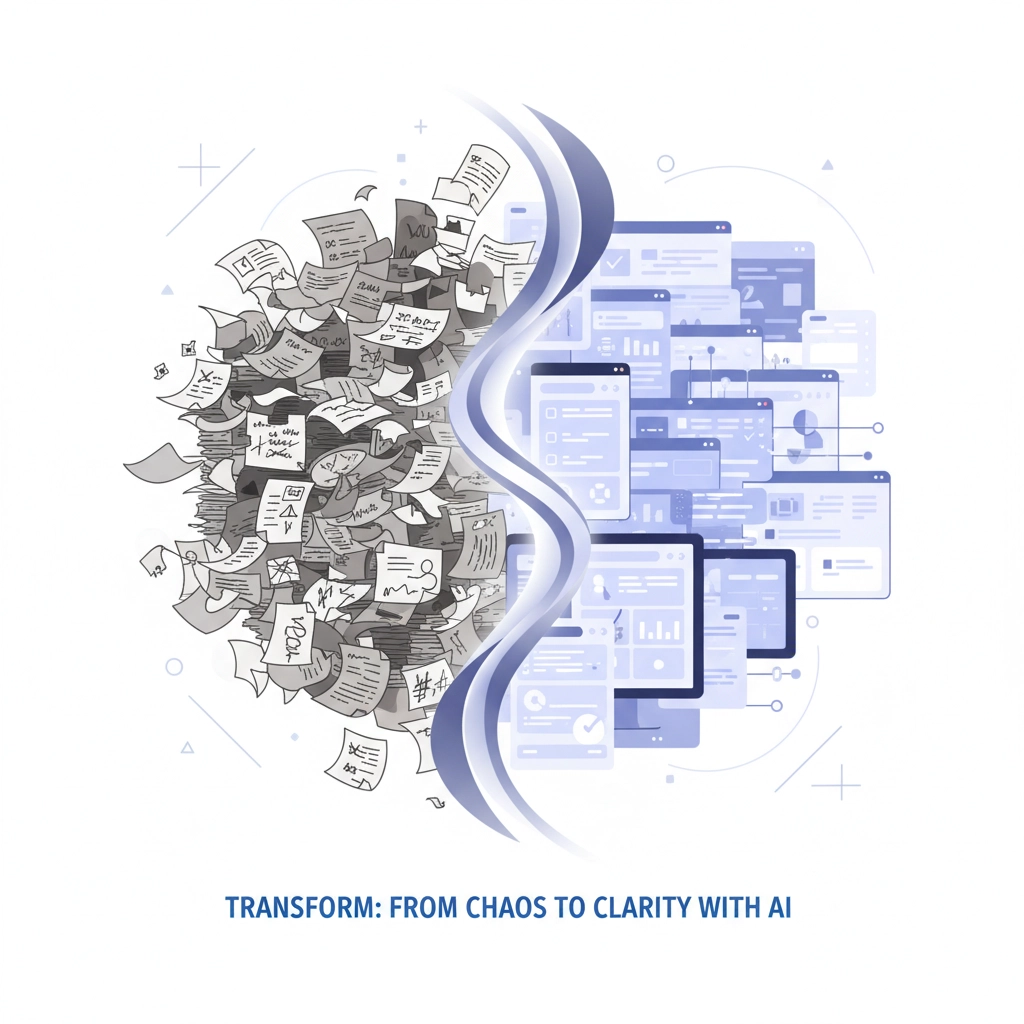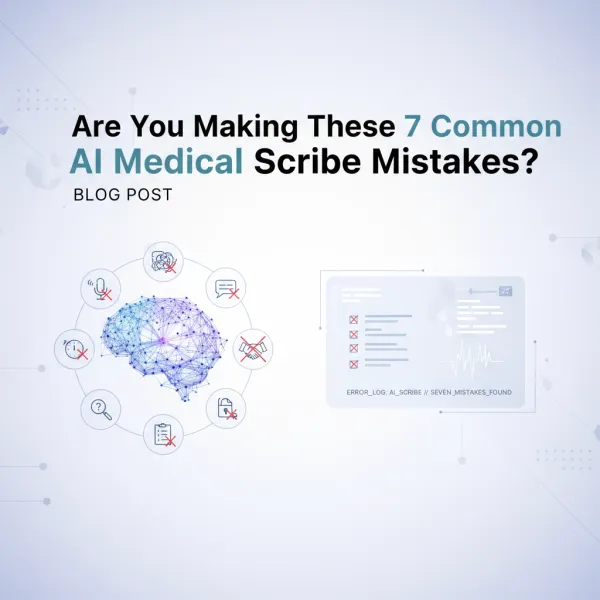The Ultimate Guide to Charting AI: Everything You Need to Succeed in 2025

Hey there, future doctors and early-career clinicians! 👩⚕️
If you're reading this, chances are you're drowning in documentation, staying late to finish notes, or wondering if there's a better way to handle all that charting. Well, we've got some exciting news for you: 2025 is the year medical charting AI finally delivers on its promises, and we're thrilled to walk you through everything you need to know.
What Exactly Is Medical Charting AI?
Let's start with the basics. Medical charting AI, also known as AI-powered medical scribing, is technology that listens to your patient encounters and automatically generates clinical documentation. Think of it as having a super-smart, always-available scribe who never gets tired, never makes spelling errors, and works in both English and French (perfect for us Canadians, eh?).
Unlike those clunky dictation systems from the early 2000s, today's AI medical scribes use advanced natural language processing to understand medical conversations, extract relevant information, and format it into proper SOAP notes, progress notes, and other clinical documents.

Why Canadian Residents Are Going All-In on AI Scribing
Here's the thing: residency is tough enough without spending 2-3 hours every evening catching up on notes. Recent studies show that Canadian residents using AI-powered medical scribe tools are saving an average of 2.5 hours per day on documentation. That's time you can spend with patients, studying, or (crazy idea) actually getting some sleep.
The numbers don't lie:
- 78% reduction in time spent on documentation
- 65% decrease in after-hours charting
- 89% of residents report less burnout when using AI scribing tools
- 92% improved work-life balance scores
But it's not just about time savings. AI medical transcription helps you create more complete, accurate notes. When you're seeing 15+ patients in a clinic day, it's easy to forget details or rush through documentation. AI scribing captures everything, ensuring nothing falls through the cracks.
How AI Medical Scribing Actually Works in Real Practice
Let's break down the magic (because it really does feel like magic the first time you use it). Modern AI-powered medical scribe software works through several key steps:
1. Ambient Listening
The AI listens to your entire patient encounter through your device's microphone. Don't worry: it's not recording your conversation about weekend plans with your attending. It's specifically trained to identify and focus on medically relevant dialogue.
2. Real-Time Processing
As you speak with patients, the AI is processing the conversation in real-time, identifying key medical terms, symptoms, treatment plans, and other clinically relevant information.
3. Smart Formatting
Here's where things get really cool. The AI doesn't just transcribe: it organizes information into proper clinical note formats. Chief complaint goes where it should, review of systems gets properly categorized, and assessment and plan sections are clearly structured.
4. Instant Generation
Within seconds of completing your encounter, you have a complete draft note ready for review and finalization.

Essential Features for Canadian Healthcare Settings
When choosing an AI medical scribing solution, especially in Canada, there are some non-negotiables you need to consider:
PIPEDA and HIPAA Compliance
This isn't optional, folks. Your AI transcription app needs to be fully compliant with Canadian privacy laws (PIPEDA) and ideally HIPAA as well, since many Canadian systems interface with US platforms. Look for solutions with proper privacy impact assessments and security certifications.
Bilingual Capabilities
Canada is bilingual, and your patients might switch between English and French mid-conversation. Advanced AI medical scribes can handle code-switching seamlessly, ensuring nothing gets lost in translation.
Specialty-Specific Training
Whether you're in internal medicine, family practice, surgery, or any other specialty, your AI scribe should understand the terminology and documentation patterns specific to your field.
EMR Integration
Your scribing software should play nicely with whatever EMR system your hospital or clinic uses. Nobody has time for copy-pasting between systems.
Scribeberry: Leading the Charge in Canadian Medical AI
Speaking of solutions that tick all these boxes, let's talk about Scribeberry: a Canadian-developed AI medical scribing platform that's been making waves across the country.
What sets Scribeberry apart is its deep understanding of Canadian healthcare workflows and regulatory requirements. The platform is fully PIPEDA and HIPAA compliant, with comprehensive security assessments and privacy controls that meet the highest standards.
Key Scribeberry Features:
- True bilingual processing: Seamlessly handles English-French conversations
- Specialty customization: Trained on medical terminology across different specialties
- Canadian privacy compliance: Full PIPEDA compliance with detailed privacy impact assessments
- Real-time documentation: Generate notes during or immediately after patient encounters
- EMR integration: Works with major Canadian EMR systems
The platform has undergone extensive security risk assessments and maintains transparent privacy policies specifically designed for Canadian healthcare settings.

Getting Started: A Practical Roadmap
Ready to dive in? Here's your step-by-step guide to success with medical charting AI:
Week 1: Research and Setup
- Compare different AI medical transcription platforms
- Check your institution's policies on AI tools
- Set up your chosen platform and complete any required training
- Download necessary mobile apps or software
Week 2: Start Small
- Begin with 2-3 straightforward patient encounters per day
- Focus on familiar encounter types (follow-ups, routine visits)
- Review every AI-generated note carefully
- Don't rely 100% on the AI yet: use it as a smart starting point
Week 3-4: Build Confidence
- Gradually increase usage to more encounters
- Try with different types of visits (new patients, complex cases)
- Start trusting the AI more while maintaining oversight
- Experiment with voice commands and specific formatting requests
Month 2 and Beyond: Full Integration
- Use AI scribing for most patient encounters
- Customize templates for your specialty
- Share experiences with colleagues
- Provide feedback to help improve the AI
Common Challenges and Pro Tips
Let's be real: transitioning to AI medical scribing isn't always smooth sailing. Here are the challenges residents commonly face and how to overcome them:
"The AI doesn't understand my attending's mumbling"
Solution: Position your device strategically and don't be afraid to repeat key information clearly. Most AI systems learn from repetition.
"I'm worried about patient privacy"
Solution: Use platforms with proper compliance certifications. Patient informed consent forms can help address concerns transparently.
"The notes need too much editing"
Solution: This improves with time. Initially, expect 20-30% editing, but this typically drops to 5-10% as the AI learns your patterns and you learn to speak more clearly.
"My institution is hesitant about AI tools"
Solution: Share research on time savings and accuracy improvements. Offer to pilot the program with proper oversight and evaluation metrics.

The Future is Now (and It's Pretty Exciting)
We're living in incredible times for healthcare technology. AI medical scribing in 2025 isn't just about saving time: it's about improving patient care by letting you focus on what matters most: your patients.
The technology has matured to the point where it's genuinely helpful rather than frustrating, privacy concerns have been addressed through proper compliance frameworks, and the cost has become reasonable for institutions and individual practitioners.
For Canadian residents and early-career clinicians, adopting AI medical scribing isn't just a nice-to-have anymore: it's becoming essential for sustainable practice and work-life balance.
Ready to Transform Your Documentation?
Whether you choose Scribeberry or another platform, the important thing is to start somewhere. The learning curve is surprisingly gentle, and the benefits compound quickly. Your future self (and your personal relationships) will thank you for those extra hours you're not spending hunched over a computer finishing notes.
The future of medical documentation is here, it's intelligent, and it's ready to help you become the physician you always dreamed of being: one who has time to actually connect with patients rather than just document encounters. 🚀
Ready to get started? Check out the available options, talk to your colleagues who are already using AI scribing, and take the plunge. Your residency (and your sanity) will be better for it.



